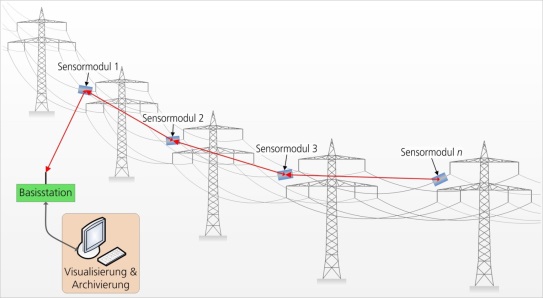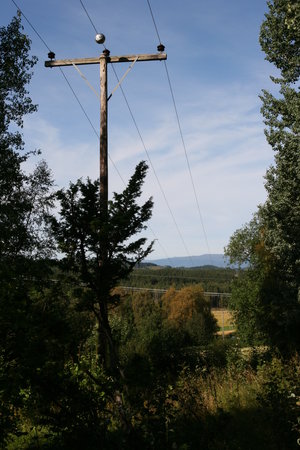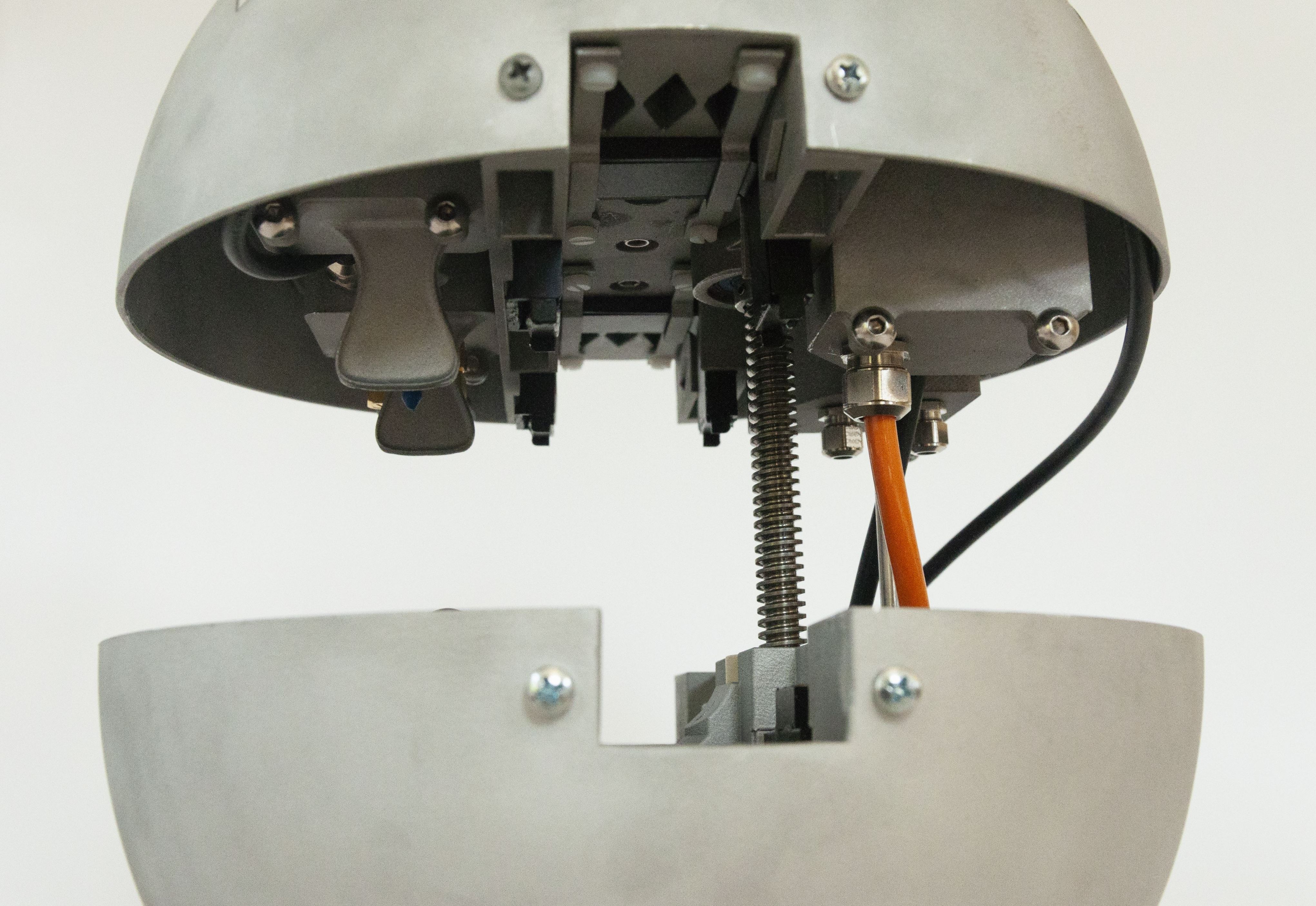Condition Monitoring of Overhead Lines
In the context of climate protection, the importance of energy efficiency is increasing, as is the share of electricity from renewable energies. Thousands of wind farms, solar modules and biogas plants already generate large quantities of green electricity. The expansion of wind power plants in particular has led to leaps in performance in recent years. In addition to the optimal utilization of the high-voltage overhead lines, the rapid detection of hazardous situations is a central issue. Fraunhofer IMS has developed a sensor system with energy self-sufficient sensor modules for monitoring the operating parameters.



The share of renewable energies in EU-wide electricity generation rose to a good 32 percent in 2018. This is shown by the 2018 Annual Report on the European Union's electricity system. However, the larger quantities of green electricity must be fed in, transported and distributed safely. This requires modern and efficient grids. In addition to optimal utilization of overhead lines, the fastest possible detection and localization of dangerous situations such as short circuits or ice cover is an important performance indicator for network operators. This requires a sensor-based acquisition of the operating status with electronic sensor modules, the so-called Condition Monitoring. The sensor modules are installed at periodic intervals directly on the conductor of an overhead line. The systems currently available on the market are not completely convincing in terms of reliable monitoring of operating parameters. The immature or partially missing infrastructure with regard to area-wide mobile network coverage makes Condition Monitoring of high-voltage overhead lines even more difficult.
An important feature is the autonomous operation of the sensors on the overhead line, which draws its energy from the power of the conductor by means of energy harvesting. At this point, the Norwegian company Heimdall Power AS and the Fraunhofer IMS started to develop a sensor system, which monitors a multitude of parameters for Condition monitoring during operation even under difficult conditions and functions independently through energy harvesting. In addition to monitoring the operating parameters such as conductor cable/housing temperature, conductor current or conductor inclination the system also detects short circuits. The collected data is forwarded via the license-free ISM frequency band at 868 MHz to a base station, which sends the data via the mobile network or an existing Ethernet network to a cloud application for further processing.
“The sensor modules mounted on the overhead line are supplied by inductive energy harvesting from the overhead line, i.e. the energy of a few milliwatts required to operate the sensor module is converted by induction from the magnetic field surrounding the conductor cable into an electrical voltage in a coil. This means that the sensor system is not dependent on batteries and their regular replacement”, explains Dr. Gerd vom Bögel, Business Unit Manager "Wireless & Transponder Systems"
at Fraunhofer IMS.
The realized dynamic range of the energy harvester covers the current range commonly used in distribution and transport grids. The energy harvester also survives short circuits, which can reach several 10 kA of current. The sensor modules are mounted with so-called hotsticks directly on the current- and voltage-carrying overhead line, thus enabling uninterrupted operation of the line. The use of a low-power wide-area radio standard enables high transmission ranges even without the presence of one hundred percent mobile radio coverage.
Since the second quarter of 2019, the prototypes have been tested by Heimdall Power AS in pilot customers' application environments as part of the development project. In the future, further versions with different operating parameters and functions are conceivable to make Condition Monitoring on high-voltage overhead lines even more effective and informative. The data collected during operation can not only be used for direct Condition Monitoring, but also serve as a source of information when planning new networks and expanding existing grids.
Heimdall Power AS received the award as one of the top three “Gamechanging Cleantech Nordic Startups by Cleantech Nordic” in May 2018 and the award as one of the top 100 “Global Cleantech Company by the Cleantech Group” in January 2019. More information about Heimdall Power AS at www.heimdallpower.com.
Fraunhofer IMS
For over 30 years scientists at Fraunhofer IMS in Duisburg have been dealing with the development of microelectronic circuits, electronic systems, microsystems and sensors. Because of its comprehensive know-how, the access to technology and the high-quality development work the Institute is a worldwide recognized partner for the industry. In eight business units Fraunhofer IMS is dedicated to applied research, advance development for products and their applications. High-quality, efficient and marketable technologies and procedures that are used in extremely many branches take center stage in contract work.